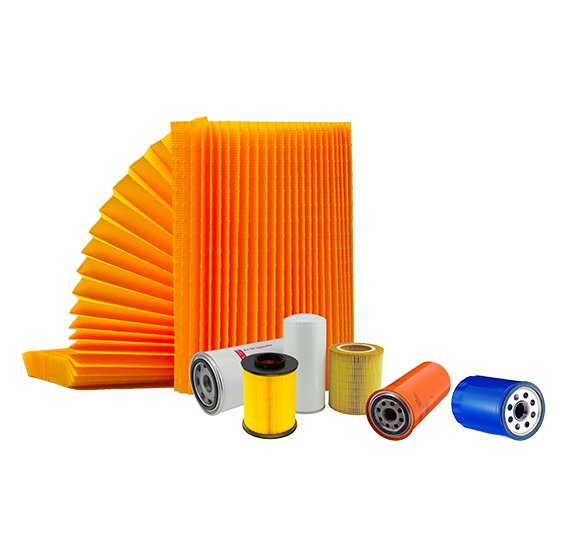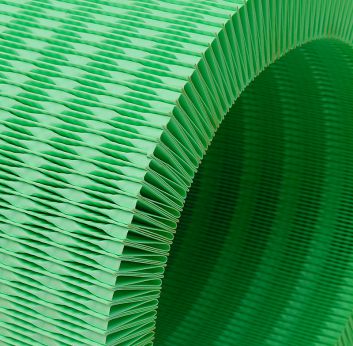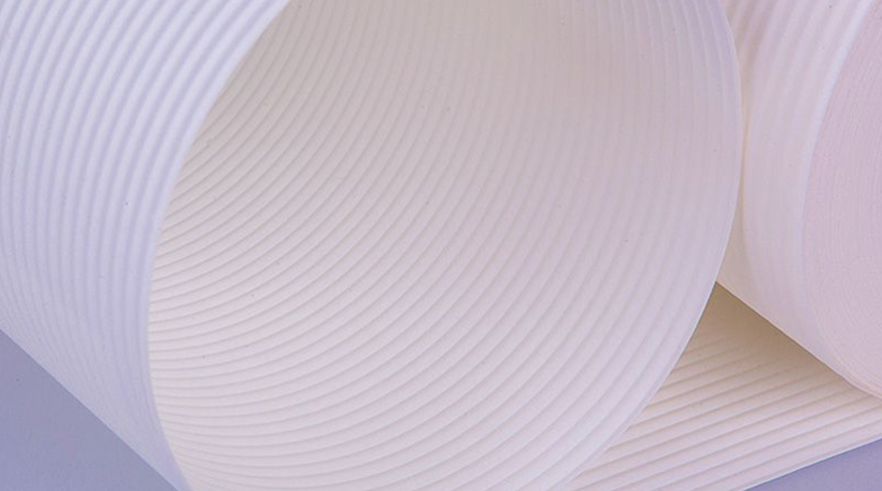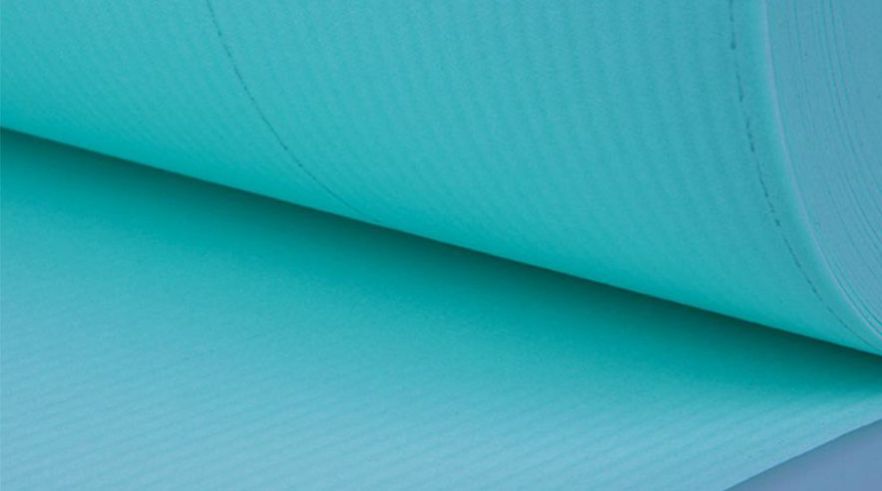Non Woven Fabric Wallpaper - Tianjinsheng
Non-woven wallpaper has been a popular product on the wallpaper market since the 1990s. The compacted mixture of cellulose and polyester fibers provides very good dimensional stability and is highly resistant to mold and mildew growth.
Blends of cellulose and polyester fibers
Blends of cellulose and polyester fibers, i.e. natural and synthetic fibers, are called "nonwoven materials". This revolutionary wallpaper material was introduced to the market in the early 1990s. Pulp or cellulose is obtained from chemically treated plant fibers. Polyester is a synthetic fiber that is very important in the textile industry.
Dimensional stability due to compaction
In the production of nonwoven wallpapers, natural and synthetic fibers are compacted together with a binder, resulting in very good dimensional stability. The two types of fibers are fused together to form a tear-resistant, stable unit that is still breathable. The compaction process also ensures that individual lengths or strips of wallpaper do not swell with moisture from the paste and that the lengths (or strips) of wallpaper do not shrink as they dry.
High resistance to mold growth
The combination of cellulose and synthetic textile fibers is moisture resistant and provides excellent protection against mold and mildew. This fact was one of the main reasons for the development of innovative non-woven wallpapers at the time. Thanks to this property, moisture is not trapped between the paper and the wall (which can lead to mold). Instead, it can circulate freely.
What are the advantages of non-woven wallpaper compared to paper wallpaper?
Nonwoven wallpaper models fit easily, especially if soaking time is avoided. In addition, nonwoven wallpaper is breathable, highly durable, low flammability, easy to clean and remove, and light resistant.
No soaking time required
Nonwoven wallpaper completely eliminates many of the steps required for paper-based models. Bracket tables are not always required. These wallpaper types completely avoid the need to paste individual lengths of wallpaper and observe soaking times. The adhesive is applied directly to the wall. Thus, even for beginners, non-woven wallpapers are easy to use and uncomplicated.
Breathable
Nonwoven wallpapers are breathable and airy and can therefore also be used in humid areas and wet rooms. These properties prevent mold and mildew and keep the indoor climate at a healthy level.
Very strong
The high quality resulting from the basic materials and the compaction process make nonwoven wallpapers very hard-wearing and tear-resistant. Small cracks can be covered without repair or filling work (saving time and materials!) . The non-woven structure also acts as a fabric reinforcement to prevent cracking.
Low combustibility
In residential, commercial and public spaces, fire resistance is essential. The better the fire resistance of the wallcovering, the better the fire protection. Nonwoven wallpapers are usually flame resistant ("low flammability"). The special surface treatment significantly delays the ignition of the flame. Nonwoven wallpapers are therefore also very suitable for buildings with public access.
Easy to clean
Nonwoven wallpaper has a washable surface that can be easily cleaned if certain types of stains appear. Dirt and some water-soluble stains can be carefully removed with a cloth and warm soapy water. On the other hand, oils, fats and stains containing solvents cannot be removed from the washable surface.
Easy to remove
When removing non-woven wallpaper types, they do not require any preparation, such as soaking or perforating with a spiked roller. Instead, full lengths can be removed in a dry state. There is usually no residue left on the substrate, so new wallpaper can be applied directly.
Light resistance
Another advantage that should not be underestimated is the good lightfastness of nonwoven wallpapers. This means that these models retain their color, i.e. the color does not fade. This also makes these wallpapers more versatile, as direct, permanent sunlight has no effect on the visual effect.
What does non-woven wallpaper consist of (in detail)?
Nonwoven wallpapers are made up of several components. In addition to cellulose and synthetic fibers, they also contain acrylic polymers, fillers and sometimes preservatives and fungicides.
Cellulose
With a cellulose content of about 40-85%, cellulose is the largest component of nonwoven wallpaper. The raw material for cellulose is industrial or plantation wood, chopped and chemically broken down. In terms of quality, the main difference is between coniferous and broadleaf wood pulp. Bamboo and straw are sometimes used as raw materials.
Synthetic fibers
Synthetic (man-made) fibers make up about 15-30% of the non-woven wallpaper material. Polyester, polyamide and polyacrylic are some common synthetic fibers, with polyester being the most commonly used material. Synthetic fibers are produced from coal, crude oil or natural gas through a special spinning process.
Acrylic polymers
Acrylic polymers account for between 0% and 30% of nonwoven wallpapers. These synthetic resins are used as binders for compacting cellulose and textile fibers. Acrylic polymers are known for their liquid-absorbing properties, making nonwoven wallpapers suitable for use in humid rooms.
Fillers
Fillers add volume, making the nonwoven wallpaper slightly heavier and giving it extra stability. The foam provides greater thickness, depending on the type, and also gives the wallpaper a tactile structure.
Preservatives
Nonwoven wallpapers may contain preservatives (but they do not necessarily have to). Usually, these substances are used to preserve certain colors, finishes and coatings and to protect them from microorganisms.
Fungicides
Fungicides are antifungal agents that reliably kill fungi or their spores. They can be obtained on a chemical or biological basis. For nonwoven wallpapers, the purpose of fungicides is to protect against mold and bacteria. These agents are usually integrated in dyes and coatings.
Which non-woven wallpaper is best?
The grammage and thickness of the material, the type of surface, cellulose from sustainable forestry and water-based printing inks are the main factors that ensure health-conscious quality.
Grammage and thickness of the material
Properties such as processing quality, living comfort, acoustic and thermal insulation or visual effect depend to a large extent on the grammage and material thickness of any nonwoven wallpaper. The surface weight (g/m 2 ) is the decisive factor when selecting a wallpaper for a specific purpose.
Smooth or structured surfaces
Surface types are primarily of aesthetic importance and are therefore influenced by personal taste. Delicate embossed structures create a high-quality visual effect. Smooth surfaces look sophisticated and are easier to paint. They require less paint and fewer brush strokes to achieve excellent results than structured surfaces.
Cellulose from sustainable forestry
The cellulose used for nonwoven wallpapers is obtained from wood. Wood is an important material, and its environmental protection and resource conservation are essential to ensure that this important raw material will remain available in the future. Sustainable forestry (FSC certification) refers to forests and plantations that are managed according to strict ecological and social principles. For example, only wood that can grow back can be taken.
Water-based inks for patterned wallpapers
Water-based dyes protect the environment and people's health. These light-resistant colors contain almost 50% water. Binders and colored pigments make up 20% each, organic solvents 5% and other reagents about 5%. Water-based dyes are increasingly used for patterned wallpapers due to their positive effects on people and the environment.
Can non-woven wallpaper be harmful in any way?
Today, the use of substances that are harmful to health has been largely avoided or significantly reduced in wallpaper production. Harmful substances such as phthalate softeners, organohalogen compounds, dibutyltin and formaldehyde are rarely used.
Phthalate plasticizer diisononyl phthalate (DINP)
Diisononyl phthalate (DINP) is a mixture of organic compounds belonging to the phthalate group and is also used as a plasticizer for vinyl wallpaper. Phthalates are known for their harmful effects, such as those on the liver, kidneys and hormonal system. Responsible manufacturers now rely on phthalate-free wallpapers.
Organohalogen compounds
Organohalogen compounds are compounds in which bromine, iodine, fluorine and chlorine are combined with hydrocarbons that act as solvents. They can enter nonwoven wallpaper via dyes, to name just one example. They accumulate in the environment and are difficult to break down. Unfortunately, they are known to trigger allergies and some may cause cancer.
Dibutyltin (DBT)
Dibutyltin (DBT) is an organotin compound with two butyl groups. small amounts of these toxic chemicals may be contained in PVC, the vinyl coating used for wallpaper with a nonwoven carrier layer. Possible harmful effects on humans include skin irritation, immune system irritation, and dizziness.
Formaldehyde
Formaldehyde is a gaseous compound that has a pungent, acidic odor at low concentrations. The substance is the basis for other compounds used in the production of paints, varnishes or adhesives. Formaldehyde is naturally present in wood (cellulose production). However, the amounts measured in non-woven wallpaper are well below the threshold.
Our company is a leading China China Filter Paper manufacturer, supplier and exporter. Adhering to the pursuit of perfect quality of products, so that our China Filter Paper have been satisfied by many customers. Extreme design, quality raw materials, high performance and competitive price are what every customer wants, and that's also what we can offer you. Of course, also essential is our perfect after-sales service. If you are interested in our China Filter Paper services, you can consult us now, we will reply to you in time! Shijiazhuang Tianjinsheng Non-woven Technology Co., Ltd. is the largest supplier of acrylic resin filter paper in China, with more than 30 years of production experience, and the filter paper has ISO9001 certification. The parameters are the same, there are different grades of products, can supply to different areas of customer demand, specific reference to the parameters table on the website, and leave a message stating the requirements and units you need, we will reply to your email within 24 hours.
Related recommendations:
2. How Does the Air Filter Affect the Performance of the Car?
3. 4 Types of Car Filters and What They Do for You
4. 3 Benefits of Replacing Your Car Air Filters






评论
发表评论